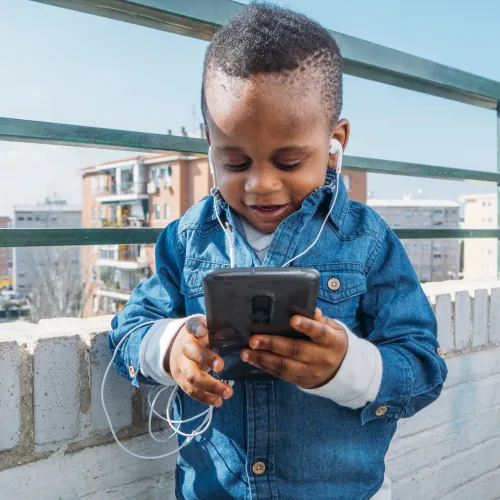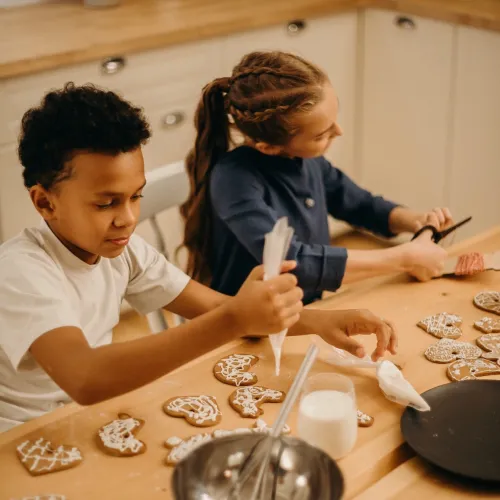Letter-Writing: Why Long-Distance Parents Should Bust Out the Pencil & Paper

Long-distance relationships between parents and children require creative thinking and planning to keep family bonds strong. Any distance between a child and their parent can add stress after a divorce or separation, and the entire family has to be on the same team to keep everyone close.
Technology has eased some of the tension associated with long-distance co-parenting, as parents now have the option of connecting with their children regularly and relatively simply. Yet emails, text messages, and even video chats cannot always adequately replace face-to-face interactions. Sometimes parents will need to supplement their electronic communication with other methods to keep relationships well-rounded and robust.
Reasons to add letter-writing to your communication repertoire
Letter-writing may be a dying form of communication, but the tangible nature of letters can add a new dimension to a long-distance parent-child relationship. They are a simple and inexpensive way to connect, and their benefits expand beyond simply being just another form of communication. Still not ready to hunt down that Pixar stationery set for your Coco-loving 8-year-old? Here are 3 reasons why you should add letter-writing to your communication repertoire if you're a long-distance co-parent.
Academics
This might not be a benefit that your child eagerly anticipates, but regular letter-writing with a parent can help children not only with their handwriting but also with their reading comprehension and communication skills.
Text messages and emails are typically very informal, and that allows us to communicate with a more natural rhythm and feel. One study has even shown that people may use punctuation in text messages to replace the non-verbal or tonal cues that aren't present in electronic communication. But while text messaging may be ubiquitous in your children's lives as they grow up, they'll have far less exposure outside of the academic sphere to communication through long-form writing.
Depending on the age of your child, the benefits of letter-writing will change. Younger children, while they may not be writing multi-page letters, can still practice their handwriting, sentence formation, and reading comprehension by exchanging correspondence with a loved one. Beyond simply sharing stories, parents should ask questions that require children to answer beyond a simple yes or no to keep letters flowing.
Supporting children in having meaningful relationships with both parents should be a goal for every co-parent. So if a child is on the younger side, the parent with whom the child lives for the majority of the time will need to play an active role in helping them respond to letters.
While it never hurts for them to practice their handwriting, older children will receive different benefits from writing letters. Long-form writing takes careful composition and a well thought-out structure to be easy and pleasurable to read. While letter-writing will still be far more informal than academic writing, extra practice never hurts! Just make sure that the letters you send to each other don't end up feeling like homework. Although there may be academic benefits to writing regularly, letters between parents and children should not feel like an academic exercise.
Anticipation + Stability
Technology-aided communication is fantastic because conversations can happen in real-time, which is essential when trying to bridge the distance between parents and children. Conversations on the phone, video chats, and other digital connections cannot be replaced; however, there's a unique anticipation that comes with knowing something special is headed your way in the mail.
Most of us no longer expect to see letters waiting for us when we get home. Children are likely more accustomed to packages waiting on their doorstep than a standard #10 envelope in their mailbox. But while sending letters at first may feel awkwardly old-fashioned, the extra time and care it takes to craft a letter adds a special significance when one is received.
If letter-writing becomes a regular tradition, it can even become a positive force of stability after the immense upheaval often caused by divorce and separation. The more reliable forms of connection and communication a child has, the more confident they can be in their new family structure.
Memories
There are many facets to relationships between parents and children, and the memories we carry with us into adulthood can be precious and steadying.
When thinking back on the family activities we enjoyed as children, oft-repeated hobbies or adventures tend to stand out more strongly in our memories. When long-distance co-parenting, however, creating those moments can be much more difficult as parents cannot rely on daily physical interactions to do so. Instead, they have to be a little more creative to bridge the distance between them and their children.
While phone calls and other forms of electronic communication are perfect for keeping interactions consistent, letters provide physical anchors between parents and children. When reread, they can also bring us back to cherished memories from our childhoods. They can transform into keepsakes that act not only as mementoes for children as they grow up but also as windows into family history for grandchildren and future generations.
Parents just have to make sure that they are dedicated to the endeavour. Once the exchanging of letters begins, children should never be left wondering why their most recent letter hasn't been responded to.
So what should you write about?
Writing letters may be an inexpensive and simple undertaking, but it can be frustrating if parents find themselves with writer's block when they sit down to begin. With the ease of electronic communication, parents and children have the ability to talk at a moment's notice about anything and everything. So what should parents include in a letter that won't simply be spoken about the next time they're on the phone with their child?
Ask more questions
While many of us may prefer real-time conversations, they will never be long enough to cover all possible topics of conversation. While on the phone, parents may focus on questions about school, friends, and other recent happenings, whereas letter-writing presents the opportunity to delve deeper into a child's interests.
Asking questions and starting lengthier discussions are reasonable options for parents with older children. Parents and children can discuss books they've read, movies they've loved, and current events about which they are passionate. Parents should also do their own independent research about topics that engage their children. Doing so shows children that they have the support and attention of their parents, and that's vital for building strong parent-child relationships.
For those with younger children, though, it may be best to keep letters short and sweet.
Don't limit yourself to words
While letter-writing may be a worthwhile pursuit for parents whose children have learned to write, those with children who are still learning may want to supplement their letters with other media.
Parents who are artistically-inclined may want to include doodles or drawings. And regardless of the artistic merit of the parents, children can always send their own artwork to be admired by their parent.
Exchanging mail also gives parents the opportunity to share pieces of family history. Our family photo albums nowadays may be cloud-based, but photos from a parent's or grandparent's childhood most definitely are not. If parents do decide to send snapshots to their children, they should also include a description about the memories captured within the photo when possible. As children grow and start families of their own, those photos and chronicles of their family's history will become cherished keepsakes to pass along to their own children.
Letter-writing is undeniably old-fashioned. For long-distance co-parents, however, having one more method for enriching their relationships with their children is more than worth the trip to the post office. Letter-writing can aid children with their reading and writing skills, giving them extra opportunity to work on penmanship and composition; but the main benefits will always be the many ways in which it strengthens family ties and more resolutely connects children and parents separated by distance.







